Maryland church learns about its past following discovery of forgotten cemetery
A Maryland reverend recently led a group of experts to learn more about a Charles County cemetery. What they discovered taught them more about their church, community and its history.
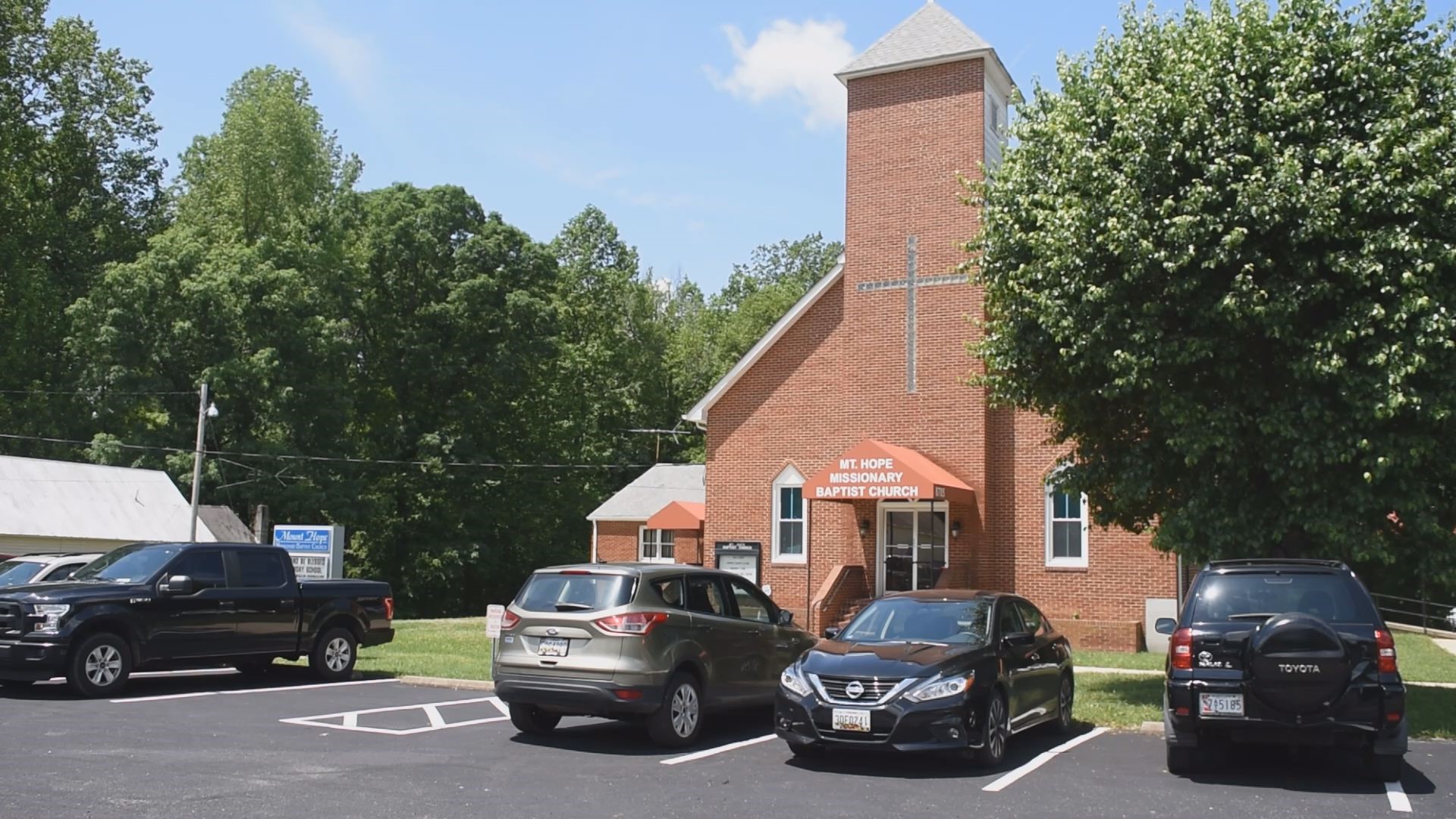
CHARLES COUNTY, MD -- A small forest, in Southern Maryland, once held a decade’s-long secret that may have gone unnoticed if not for the efforts of a curious clergywoman.
Reverend Ruby Brown-Thomas grew up visiting Nanjemoy, Maryland. Nanjemoy is a small Charles County community that sits just a few miles east of the Potomac River.
It is not very large. Just a few roads divide its sprawling farmland. Drivers are more likely to encounter a four-way stop there than a stoplight.
But, it holds a special place in Brown-Thomas’ heart. She calls it, “God’s Country”.
"It's quiet,” Brown-Thomas said. “It's peaceful."
A DISCOVERY IN THE WOODS
She’s been a part of the community for close to 70 years. She has also worked tirelessly to learn all she can about its history.
But, to find some stories, you have to dig.
"All of this land was farm land," Brown-Thomas said as she pointed to a small patch of trees near Poseytown and Bowie roads.

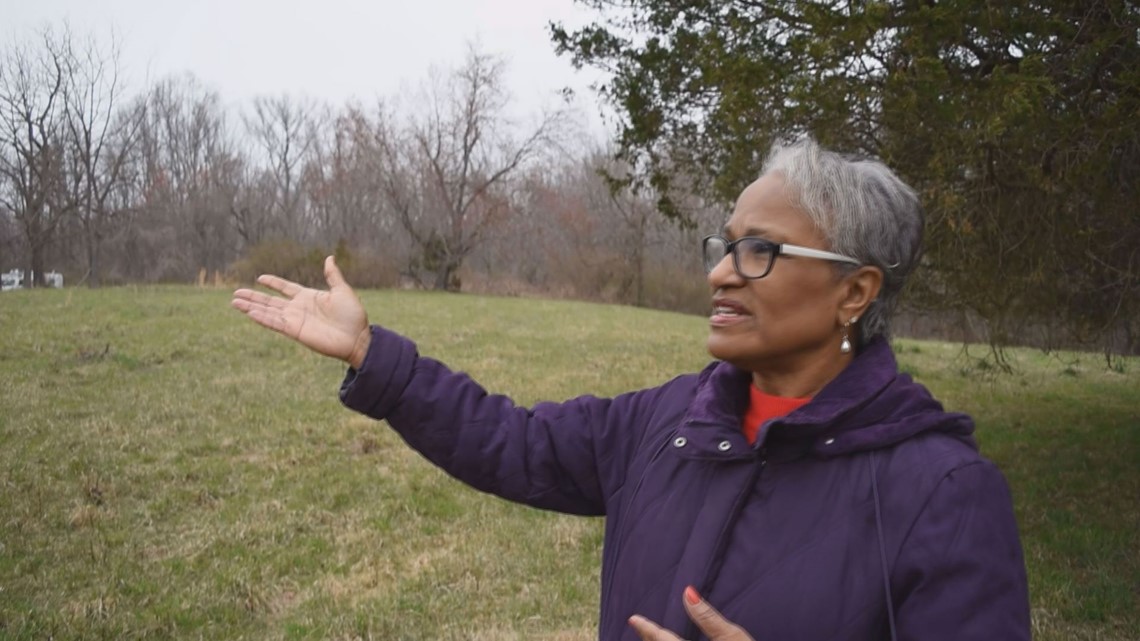
As a little girl, Brown-Thomas, was told that people were buried on that plot of land.
Every time she passed the area, she said one question came to mind.
"I wondered, 'Who's there? Who is actually there?’" she said.
She thought the unmarked cemetery held anywhere from three to four bodies.
But, her guess was wrong.
Last October, experts discovered it was the final resting place to more than seventy people.
"When the surveyors came, their breath was taken away,” Brown-Thomas said.
THE POSEY PROPERTY
As an African-American, Brown-Thomas said she was always aware of the role slavery played in Nanjemoy.
In 1850, Maryland state records showed that close to 50,000 African-Americans lived in bondage in Anne Arundel, Calvert, Charles, Prince George’s and Montgomery counties.
“It really saddened me, because they lived at one point in time,” Brown-Thomas said. “And, they loved at one point in time and they were a part of [Nanjemoy].”
Brown-Thomas said evidence of the lives they once lived are all around Nanjemoy. She pointed to a house, just a few yards away from the burial site.
It once was a log cabin that belonged to a white slave owner named Richard Posey.
“He had his servants, who were black, living in this, the log cabin," Brown-Thomas said.

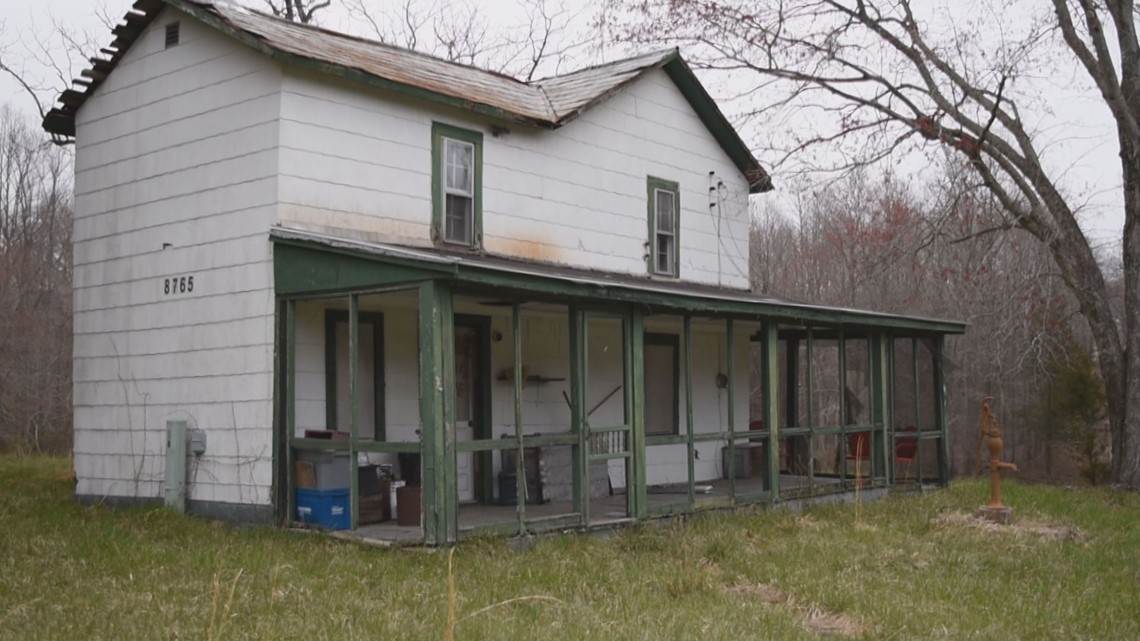
The structure became a site of worship for African-Americans living in the area.
Both Brown-Thomas and Esther Doyle Read, an archeologist with Charles County Government, said the burial site in the woods was connected to the religious movement in the log cabin.
“We know some of the members that were buried in the cemetery were Posey slaves,” Doyle Read said.
She said the land was eventually inherited by a woman who was living with Richard Posey, a suspected slave, named Lolita Diggs.
Diggs then gave the property to her daughter, Angeline Posey.
After that, Posey married a man named Anthony Carroll who is a distant relative of Reverend Ruby Brown-Thomas.
THE CARROLL CEMETERY
Since the burial ground sits on Carroll family land, Brown-Thomas calls the site “The Carroll Cemetery”.
But, to the untrained eye, it may be hard to even tell that any burial ever occurred on the property.
Just a few wood markers protrude from the ground. They lack any identifying information about the people buried below.
Last year, Brown-Thomas gathered a group of experts to examine the burial site further.
Cathy Thompson, a senior planner with Charles County Government, was a part of the team.
"We are just skimming the surface with the project that we've been able to work on,” she said.

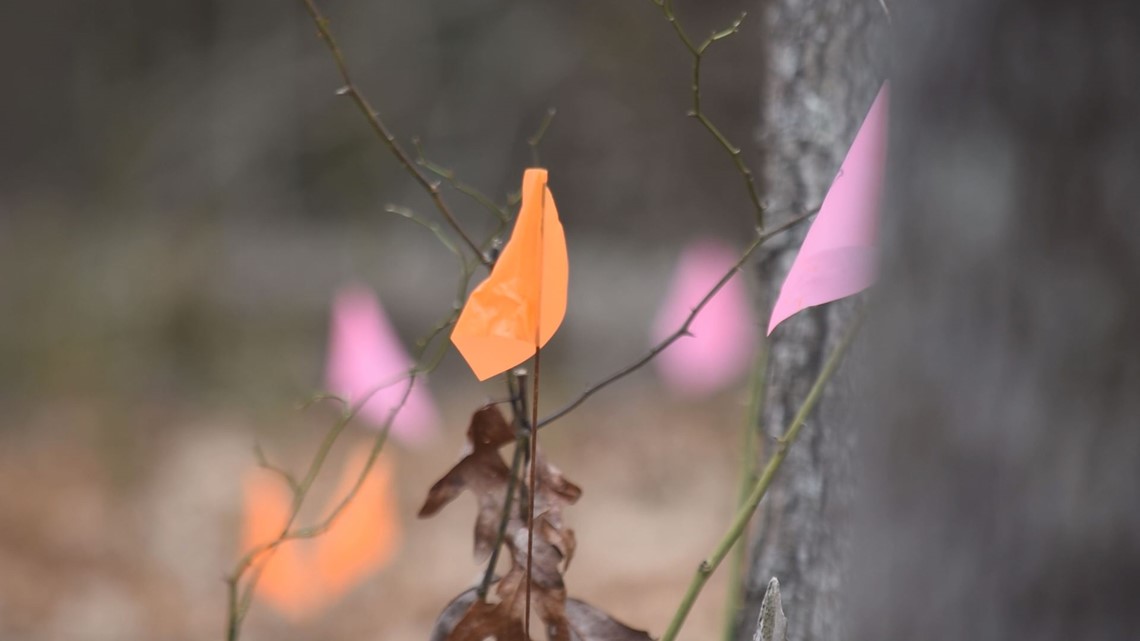
Thompson said the burial site likely predates the Civil War.
Doyle Read said one of the main reasons they were able to discover dozens of burials on the property was because small divots have formed in the land.
"In the 19th century and into the 20th century, they didn't use concrete vaults,” Doyle Read said. “So, the coffin would be put directly into the ground. They're wood. They get wet and through time, they deteriorate.”
During that process, the lids collapse into the coffin. A divot then ultimately forms at surface level.
Doyle Read said there were likely many stillborn babies who were buried at the site.
She added it is possible there are even more unaccounted bodies on the property because it was not unusual to have multiple burials on top of one another due to space limitations.
“They would bury someone very deep and then, let’s say, grandpa dies. They would bury him down deep. Grandma dies. They would bury her on top,” Doyle Read said.
‘IT’S JUST BEEN A GREAT CHURCH’
The Posey log cabin and Carroll Cemetery figure heavily into the story of Mt. Hope Missionary Baptist Church.
Its members proudly call the congregation the oldest black Baptist church in Charles County.
"It's just been a great church,” said church member Iretha Heard. “And, I've been here since I've been a little girl."
Its pastor, Francis J. Ford, said that is part of the reason the church has been around so long.
"God has had a purpose for this church to be standing here for 150 years," he said.
Ford is proud of the work the church has been able to achieve.
"Many souls have been saved," he said. "Many folks have come to the Lord."
Reverend Ruby Brown-Thomas is a member of Mt. Hope as well.

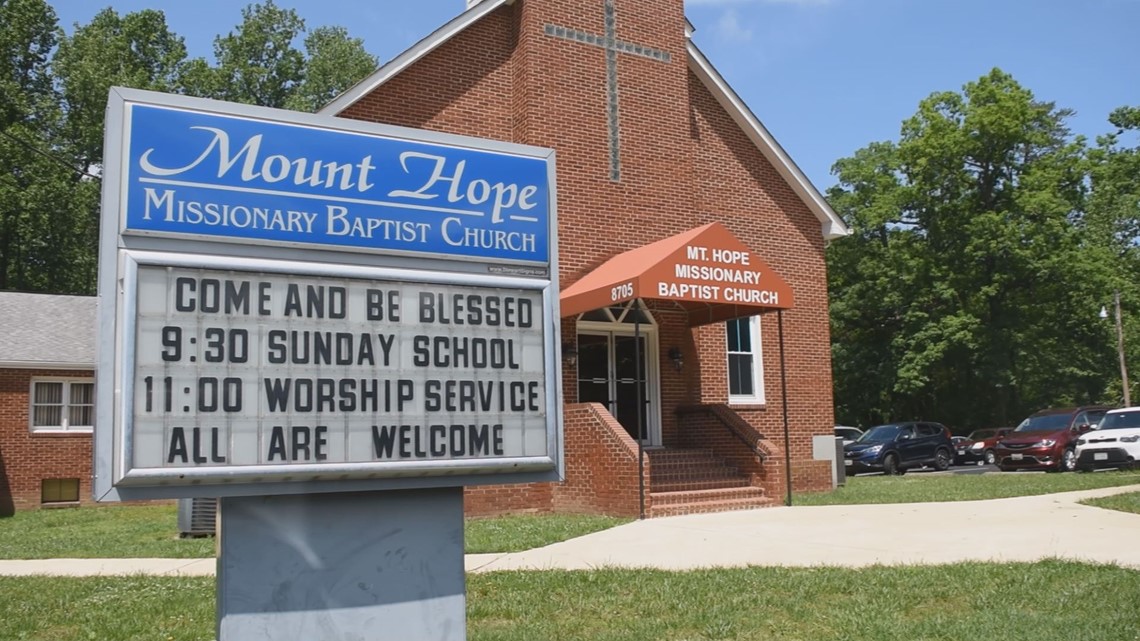
She said the church was born out of the religious gathering that started at the Posey log cabin. Many of its members are tied to that early gathering.
“I mean the stories that are being told and the stories that are being shared, it's got to enlighten other people as well,” Brown-Thomas said.
Members of Mt. Hope Missionary Baptist Church have been sharing a lot of stories as of late too.
Brown-Thomas has relied on church members and Charles County locals to provide their stories about their connections to the congregation and the old Posey site.
She hopes that information can help her learn more about the past.
FINDING FAMILY
Rudolph Posey, 84, of Charles County, was always aware of Carroll Cemetery.
However, like Brown-Thomas, he did not know how many bodies were buried at the site.
"It's amazing to me that there was this many graves in here,” Posey said as he walked through the cemetery. “In my time, I never knew a lot of these graves were back here."
Posey said he witnessed funerals at the site when he was younger.
"I remember my aunts and uncles had babies and they died and they were buried back here,” he said. “I remember them digging the grave and putting the baby in a little box and they buried them back here."

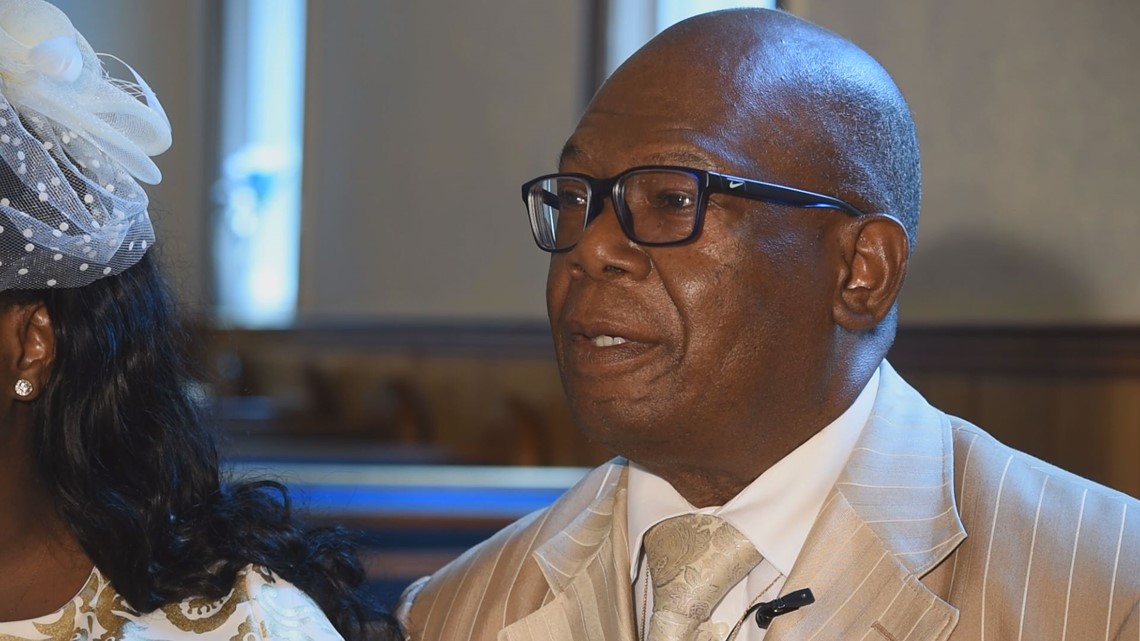
Vera Walton Merritt, of La Plata, knows she had relatives buried at the cemetery too. She said her family lived on the Carroll land.
"I remember my mother talking about various people who were buried back there,” she said.
Walton Merritt said her uncle’s twin, who died close to birth, was buried at the cemetery.
“I have one death certificate for a great-great grandfather and it says the Carroll burial place,” she said.
FORGOTTEN CEMETERIES
Roughly thirty people at the cemetery have been identified.
Tina Simmons, of the Anne Arundel Genealogical Society, helped Brown-Thomas identify about a dozen bodies.
She said funeral home records, newspaper obituaries and death certificates can aid the identification process.
However, she said sometimes documents can only take a person so far.
"It's not uncommon in old newspaper articles to have someone say an old black man in Charles County died near Nanjemoy and that's the extent of the obituary,” Simmons said.
She added in the 1900s, death certificates did not always include thorough descriptors, like the exact area where a burial may have taken place.
“That area [Carroll Cemetery site] is called Nanjemoy, but you also need to look for death certificates that say Ironsides or Crossroads,” she said.
However, Simmons said other cemeteries have stories like Carroll Cemetery in Maryland. There are many forgotten burial sites within its borders.
Simmons said her group is aware of 550 cemeteries in Anne Arundel County alone. She said thirty years ago, many of those burial sites were unknown to the public.
“Probably about half of those that we’ve really been able to pinpoint,” she said.
There are many cemeteries in places where one would least expect to find them as well.
Friendship Cemetery is surrounded by BWI Airport. Another cemetery sits roughly a mile away from the airport, hidden behind an office park.
Simmons also recalled an old cemetery that once eroded into the Chesapeake Bay.
Cemeteries can fall from the public consciousness is a variety of ways.
Sometimes, they run out of space and are no longer cared for.
In other cases, the families that operate them for private use move away.
“When the family would move on, or go someplace else, there’s no one left take care of the cemetery,” Doyle Read said.
PRESERVING THE PAST
Experts believe Carroll Cemetery was in use through the early 1940s.
After that, Brown-Thomas said many local burials occurred at Mt. Hope Cemetery instead.
Her great grandfather, Charles Henry Brown, a veteran of the United States Colored Troops, was the first person buried at Mt. Hope.
"Absolutely, they're all tied,” said Brown-Thomas of the two cemeteries. “These are probably the children of the individuals that were buried back there [at Carroll].”
Brown-Thomas said she would love to see the Posey site and Carroll Cemetery be designated as an historic site by either the state or county.
Thompson said there has been discussion about possibly placing a monument at the burial site.
“We’ve filed the paperwork with the Maryland Historical Trust so that if there’s ever any development, there’s a trigger to say, ‘Hey, there’s a historic resource here that we need to pay attention to,’” she said.


Meagan Baco works for Preservation Maryland, a non-profit that has been fighting to preserve historic places in the state since 1931.
She called the Posey site a special place. Her organization is working to document it for the future.
“The home still stands [at the site] and we did a very detailed documentation measurement,” she said. “What that means is, if the building is lost, we have baseline documentation of their craftsmanship and the place they called home.”
Baco described the documentation as a quick snapshot of an historic building.
“I’m talking about the molding details, that’s the stuff around the windows and the doors, floor plans and then how the building evolved over time,” she said.
Baco said working with Brown-Thomas and other locals in the Nanjemoy community has made preserving the site even easier.
“It is not all the time that a preservationist shows up and you have this opportunity to work with this diversity of intact resources,” Baco said.
Brown-Thomas said she is thankful for everyone’s help. She said all she wants to do is shed a little light on Nanjemoy’s past.
"[People] need to understand that these individuals paved the way for us,” she said.
